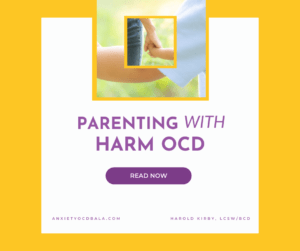What does it mean to “Live with Uncertainty?”
A common phrase used in recovery from OCD is “living with uncertainty.” But what does this mean? All of us live with uncertainty every day, probably more than we typically think about. For instance, no one knows with 100% certainty how their day will go when they get out of bed. Will you spill your coffee? Is your train going to be on time? Will you make it safely to your destination? You cannot answer any of these questions with certainty ahead of time. In order to survive, we must accept a certain amount of risk, whether we realize it or not. While some risks are larger and more obvious than others, there really is nothing in life that is completely risk-free. Therefore, learning to live with uncertainty and accepting risk an essential part of functioning.
OCD & Living with Risk

For people living with OCD, there exists an unspoken acceptance of risk in most aspects of life. However, in areas affected by OCD, there is a strong demand for absolute certainty for safety. When OCD attaches itself to specific thought content, the person feels compelled to eliminate risks associated with that obsessive-compulsive fear. This demand can be attached to virtually any thought content. For instance:
- “Am I gay?”
- “Am I a pedophile?”
- “Does my partner love me?”
- “Did I get all of the germs off of my hands?”
As easily as your brain can think a thought, OCD can attach to it; and once that happens, your mind becomes preoccupied with certainty (and thus safety) of that content. It is not clear why OCD attaches to some thoughts and not others. There is also no known correlation between the kind of thought and fear you are obsessing about and the person who suffers from that obsession. OCD can and does attach to any thought content.
When it does attach, it causes significant distress. The lack of a sense of certainty when OCD is active feels terrifying. As a result, sufferers devote large amounts of time and energy into eliminate the risk and achieve certainty. They try to erase all risk by responding to an endless chain of “what if” questions. The problem is that the goal of eliminating risk will never be achieved: sufferers only end up trapped in a cycle of short-term relief that wreaks havoc on their everyday lives.
What are obsessions?
Obsessions are thoughts, images, or urges that come repeatedly without request. They are stubborn and almost always create uncomfortable anxiety and distress. The person having the obsession finds them intrusive and doesn’t want them. He may attempt to ignore or suppress these thoughts, images, or urges or try to neutralize them through some other thought or action (compulsion).
It is not obsessive to have occasional thoughts about anything you fear or about the safety of loved ones but watch out for demands for perfect certainty. You know you can’t really read people’s minds or predict the future 100% of the time, but you get along just fine. It is the same with certainty, you can’t really have that either, but you can and do get along fine without it.
What are compulsions?
Compulsions are repetitive behaviors like hand washing, checking, ordering. They may also be mental acts like counting, praying, or any other repetitive activity designed to reduce the anxiety produced by the obsession. The behaviors and mental acts are all designed to reduce anxiety or prevent feared consequences. The compulsions, also called rituals, become excessive.
Compulsions do not include harmless religious rituals, bedtime stories, or the like. Look more at the context. Reading to a child at the same time each night is different than having to read at the same time each night because you are trying to neutralize or stop something bad from happening.
Compulsions and Risk Elimination
Compulsions provide short-term anxiety relief by letting the brain temporarily believe that risk has been avoided. For instance, if the fear is: “What if my partner is cheating on me?”, you may find relief by checking the text messages on his/her phone. However, this feeling of certainty is fleeting—before long you are re-engaged in compulsive behavior. This traps sufferers in an ongoing cycle of fear and short-term relief.
Relying on compulsions to provide temporary comfort becomes frustrating and ultimately futile. More of sufferers’ time is consumed, and the goal of having absolute certainty is never achieved. Sufferers have become conditioned to relieve their suffering through compulsive behavior; however, each compulsion increases the likelihood that sufferers will seek yet another compulsion for relief. In essence, OCD causes sufferers to stop learning and remain trapped in a cycle of compulsions.
Acceptance as a Treatment Goal
Upon entering treatment for OCD, treatment focuses on accepting that there is no life without risk. While this might sound harsh or hopeless, there is in fact freedom in accepting this reality. Letting go of the search for certainty means allowing some questions to remain unanswered or incompletely resolved. While you might not be able to know with complete certainty that all germs have been removed from your hands after one wash, you can learn to trust the feeling of “good enough,” and hold the risk that comes with it.
It takes time to accept the fear and discomfort associated with this practice, but the long-term benefits are life-changing. Rather than being stuck in an endless cycle of obsessions and compulsions, accepting that life without risk cannot exist allows you to move forward and engage with the world around you. The challenging and rewarding work of learning to live with uncertainty can help you find value in life that previously felt impossible.
Wishing you all the best in your treatment journey,
Blair Pallas

